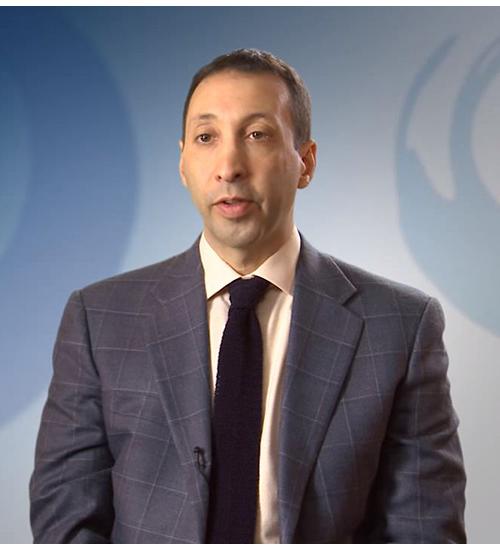Living with cutaneous lymphoma and understanding the treatment options available can be overwhelming.
The good news is that there are many treatment options available today. Armed with knowledge and information, you can be prepared for discussions with your healthcare provider about the best treatment options for you.
Treatments for cutaneous lymphomas vary based on several factors. These include whether it is CTCL or CBCL, early or advanced, and on prior treatments for the lymphoma. There is no one prescription that fits everyone, and treatments are tailored to each patient’s particular situation.
Goals of Treatment
- Improve quality of life by relieving symptoms such as pain, itching, burning, and redness
- Clear up skin patches, plaques, or tumors
- Eliminate or reduce the number of cancerous lymphocytes in the skin and blood
- Prevent migration of malignant cells from skin to other organs
- Restore immune balance and competence
As cutaneous lymphomas are indolent (slow growing), curing cutaneous lymphomas is very difficult and rarely the goal of treatment.
Your treatment plan is based on your personal situation.
While there may be common themes in treatment approaches, your treatment plan may vary based on the specifics of your lymphoma, previous treatments and experiences, your health and particular situation, and overall needs. There have been very few studies done to compare the effectiveness of one therapy for cutaneous lymphoma with another, so it is often a matter of trial and error until your healthcare team finds the right treatment or combination of treatments that work for you. It is necessary to discuss the benefits and disadvantages of treatment options with your healthcare team before making a decision on your individual treatment course. For less common forms of cutaneous lymphomas, physicians may select a treatment that has been used successfully in another, more common type of cutaneous lymphoma.
Your response to treatment may change over time.
It is important to understand that some cutaneous lymphomas will respond to a treatment temporarily, but that you may not maintain a permanent remission. Constant monitoring and maintenance will be required. For patients whose lymphoma has recurred, the treatment used previously may still be effective at controlling the disease. For others, the previous treatment may not be effective and a new treatment approach is needed.
Treatment Tracker
Download and print the treatment tracker worksheet to record each type of therapy or medications you have received to capture your experience. Keep it in a binder or folder to help organize your medical history and make it easy to reference.
Local/Skin-Directed Therapies
Skin-directed therapy are treatments that are administered directly to the skin. This includes topical therapies like topical steroids, topical retinoids and topical chemotherapy, phototherapy (light therapy), skin radiation, and surgical removal (excision) of lesions. These kinds of treatments are generally very safe and have limited internal side effects. Skin directed therapies are often used to treat early or limited cutaneous lymphoma, and are also used in conjunction with systemic therapies in more advanced cutaneous lymphoma.
Systemic Therapies
Systemic therapies are treatments given internally, such as orally, intravenously, or subcutaneously (injected under the skin). Systemic therapies can be used a single agents, in combination with skin directed therapies, or in combination with other systemic therapies. There are several different types or classes of systemic therapies.
Targeted Therapies
Targeted cancer therapies are drugs that act specifically against particular molecules needed for cancer growth. Targeted therapies usually have a lower toxicity towards normal cells and therefore may result in fewer side effects. Targeted therapies often require that a certain target be present on the cancer cells in order for the drug to work, and may not be as effective for all patients or types of cancers. Targeted therapies are leading to increasingly individualized treatments where each patient can receive therapy that is specific for their individual disease.
Biologic Therapies
Biologic therapy is a kind of targeted therapy that works with the body’s normal cell functions to fight cancer. These drugs repair, stimulate, or enhance the action of the patient’s healthy immune cells. Specific biologic agents target specific characteristics of cancer cells.
Stem Cell Transplantation
Bone marrow or stem cell transplantation is considered in cases for patients with advanced disease, though most cutaneous lymphoma patients will never need to evaluate this option. Stem cell transplantation refers to a procedure where healthy stem cells are transplanted from one person (including yourself) to another. Sources of stem cells include bone marrow, peripheral blood or umbilical cord blood. Allogeneic stem cell transplantation, in which a patient receives stem cells from another person, is the recommended transplantation method for cutaneous lymphoma patients. Hematopoietic stem cells can grow into any of the cells found within the bloodstream. They make blood cells and the components that your immune system needs to function. During a transplant, you are first treated with high dose chemotherapy or radiation to treat the cancer and eliminate your immune system, then your body is infused with healthy stem cells that then grow and produce all of the different parts of the blood that both your body and your immune system need.
EXPERT PRESENTERS
Steven Horwitz, MD, Medical Oncologist, Memorial-Sloan Kettering Cancer Center
Lauren Pinter-Brown, MD, FACP, Hematologist/Oncologist, UCLA Medical Center

